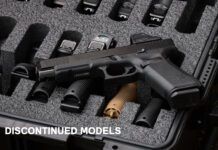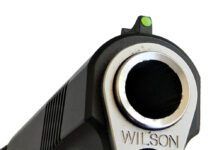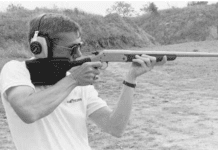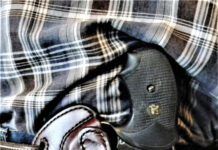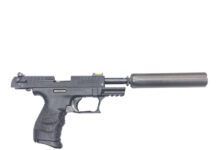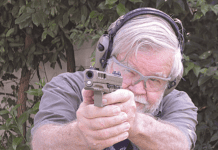Precision Reloading
Congratulations to whoever wrote your piece on precision reloading in your February, 1998 issue. I’ve been reloading, testing, shooting (bench, silhouette, etc.) and reading about this stuff since 1958 and this is the best summary of reloading procedures I have ever seen.
The last two paragraphs are especially useful. What “works” in one rifle may be a waste of time in another—indeed may cause problems in accuracy, functioning, safety, etc. This has been demonstrated in many experiments I have done (such as cartridge straightness, neck tension, etc.). Each gun set its own “rules.”
Jim Nitsos
Arroyo Grande, CA
Chipmunk Rifle
For the past seven years, I have spent my Saturday afternoons instructing beginning shooters at a local junior rifle club. In our armory, we have a Chipmunk rifle apparently manufactured during a previous corporate incarnation of the current company. While I agree with the overall assessment of this rifle presented in the November, 1997 edition of Gun Tests, there are three aspects of its design that a coach should consider carefully before using it for training a novice shooter.
First, as pointed out in the review, the Chipmunk is extremely small and light. Children must be ten before they can join our club, and I have found this rifle to be too small for most of them. The first position we teach our beginners is prone from a sandbag rest. In this position, a light rifle is not necessary because the sand bags support most of the weight. The light weight of the Chipmunk is usually more a hindrance than a help because it substantially reduces the stability of the rifle in this position.
Second, this rifle has a striker that must be manually cocked. Cocking the striker requires the shooter to break his position for each shot. This is a bad habit to develop, at least for a competitive shooter. Furthermore, in my experience, most children who are small enough to fit this rifle are barely strong enough to cock its striker. Because of this, a child trying to cock the rifle often pays more attention to the position of the striker than to the direction the muzzle is pointing. This calls for increased vigilance on the part of the instructor. I should note that the effort required to cock the Chipmunk’s striker is less than that of other rifles I have handled with this feature.
Third, on our specimen the cocked striker must be lowered before the bolt can be opened. This makes clearing a loaded rifle a somewhat dicey procedure for a young shooter and probably requires adult intervention.
John F. Collins
Rancho Palos Verdes, CA
We heartily agree a heavier (and better) rifle would be better for teaching prospective competitive riflemen the ropes. The shooting that novice shooters get under instructors such as you will be with them all their lives. Anything that makes their early acquaintance with firearms more enjoyable is to be greatly encouraged. Give them a gun that requires oddball manipulation and that is so difficult to hold steady that they can’t shoot it well, and they’ll get discouraged. The gun must suit the situation, and that choice is up to the instructor.
S&W Model 457
I am writing in response to the comments Mr. Lawrence S. Saval made about the Smith & Wesson Model 457 .45 ACP pistol (November, 1997 issue). I also had problems with the magazine catch failing in the middle of a target shooting session. After checking the pistol over, I found that the magazine catch was made of plastic. Repeated use while firing over 500 rounds through the pistol had worn off the edges of the catch. A quick call to Smith & Wesson had the pistol off to the factory at no cost to me. I also found out, from the factory rep I talked to, that other early introduced Model 457s had the same magazine problems.
When the pistol was returned to me a couple of weeks later, the first thing I checked was the magazine catch and was pleased to see it was made of steel and not plastic. Now, after 300 more rounds put through the pistol, I am happy with its reliability. I also feel that if Mr. Saval checked his new magazine catch, which should be steel, that he could come to trust and like the Smith & Wesson Model 457 and use it for the intentions he spoke of in his letter.
James Dickey
Warner, NH


